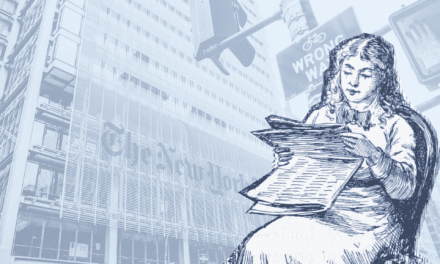
How to Write a Killer Book Synopsis

Writing a book synopsis is probably one of the hardest parts of the submission process when you’re finally ready to find an agent to represent you and your book. You’ve poured your heart and soul into a novel, and now you need to condense it down into a manageable size that still somehow conveys the excitement, depth, and complexity of your work.
It may be a daunting task, but it doesn’t have to be an impossible one. You just need to understand the reasons and structures behind what a synopsis is for, and how they’re used.
What is a synopsis?
A synopsis is more than just a brief summary of your story. Its primary function is to capture the essence of your narrative, presenting the full arc of your plot — from the initial setup to final resolution — and the arc and evolution of your main characters.
This comprehensive overview, usually written in a neutral way, without being to descriptive of “salesy”, should include the full range of emotions, conflicts, and resolutions that drive your narrative. It’s the first taste your potential publisher or agent gets of your ability to tell a compelling story, so it’s absolutely essential to make it interesting while not going over the top with your descriptions.
A synopsis will typically be around 500-800 words in length, but this can vary from agent to agent, so always do your research before submitting anything to ensure your synopsis meets your chosen agent’s requirements. A submission that doesn’t fit requirements will end up on the discard pile, so vetting your agent in advance gives you the best chance at success.

What is the difference between a plot summary, a synopsis, and a blurb?
A plot summary is a concise description of the events in your story. It’s like the skeletal framework of your narrative, outlining what happens but not delving deeply into themes, character development, or sub-plots. It aims to provide a straightforward rundown of the main plot points, without any attempt at selling the story or creating intrigue.
A synopsis, on the other hand, is a more detailed and comprehensive account of the story. It includes not just the main plot points, but also key character arcs, themes, and yes, even the ending of the story! The purpose of a synopsis is to give a complete picture of the narrative structure, showcasing the essence and progression of the plot. Agents and publishers use the synopsis to evaluate whether a story has potential, based on the plot, character development, and overall arc.
A blurb, on the other hand, is a promotional piece, often found on the back cover of a book or online book listing, designed to entice potential readers. It’s used to market a book, rather than to share what the plot is about. A blurb offers a hint of the plot and introduces the main character or conflict, but it deliberately avoids revealing key twists or the ending. The purpose is to spark interest and curiosity without giving too much away, encouraging readers to buy the book to discover what happens.
What is a Synopsis for?
A synopsis allows agents, publishers, editors, and in some cases, even beta readers, to get a quick understanding of your entire story. While it can be helpful for editors and beta readers, it’s crucial when pitching your book to agents or publishers and can be the difference between getting your book published and seeing it never leave your desktop.
A synopsis gives people a quick understanding of your entire story. It reveals the heart of your narrative, including the full plot arc, character development, main themes, and even the ending.
When you’re submitting your work to agents or publishers, your synopsis is a vital part of your submission materials. It allows them to understand your story’s trajectory and to make an initial judgement about whether the plot, structure, and characterisation are strong and engaging enough for them to invest in.
If the synopsis is compelling and well-written, it can spark their interest and make them want to read your entire manuscript. That’s why a well-crafted synopsis can be the difference between getting your book published and seeing it languish in the discard pile.
In essence, a synopsis is a selling tool, designed to intrigue agents and publishers and persuade them to read your full manuscript. But it also helps you as a writer to maintain clarity and cohesiveness in your narrative, acting as a road map that guides you through the story’s key events and character arcs that you can use when telling people about your story in future.

What should be included in your book synopsis?
Your synopsis should include all critical plot points, character progression, as well as the overall arc and tone of your story. The essential elements for any synopsis are:
- Main characters: Introduce your main characters and explain their roles in the story. Show their motivations, conflicts, and character development.
- Plot details: Summarise the fundamental moments of your plot, from the inciting incident to the climax and eventual resolution. Ensure you cover all major plot points.
- Character arcs: Describe how your characters change and grow throughout the story, and how these changes are linked to the plot.
- Themes and motifs: Highlight the main themes and motifs in your story. This will showcase the depth and complexity of your narrative.
- Setting: Briefly introduce the setting of your story to give context. However, don’t let the setting overshadow the plot and character arcs.
- Tone and style: Although your synopsis should be succinct and relatively neutral, try to weave in your narrative’s tone and style subtly if you can.
- Ending: Yes, you should reveal the ending in a synopsis! This is a major distinction between a book blurb and a synopsis. An agent or publisher needs to see how the story ends and how all the threads of your plot and characters come together in the final resolution. This provides a complete picture of your narrative.
Remember to keep your synopsis succinct and engaging, focusing on the critical elements that best represent your story and characters.
How to write a book synopsis
As much as writing a book synopsis sounds difficult, it doesn’t have to be. If you start from the basics, and work your way out, rather than starting from the outside and working your way in, you’ll find it’s a bit easier to be objective and succinct.
I like to use a a basic story structure and build out from there, layering in detail of character and setting to give it a bit of flavour. The main thing is to convey the most essential parts of your narrative as succinctly as possible, without flooding the reader with too much information.
I have two basic plot structures I generally use to help me write a synopsis. The first is a classic arc, which is:
- Exposition: Introduce the story’s status quo, setting, the main character(s), and circumstances or time period in which the story is set.
- Rising action: Begin with the inciting incident — the moment that puts the main events of the story in motion.
- Climax: This is the highest point of tension in your storyline, and often the point at which all the different subplots and characters converge where you main character must face the truth or make an important choice.
- Falling action: This is what happens as a result of the protagonist’s decision in the climax. Loose ends are tied up, and tension begins to dissipate.
- Resolution: This is how your story ends. It shows how the events of the story have changed the characters and the world around them.
The second structure I use is the ABDCE structure which I go into a lot more detail in this post, but in short, it orders your synopsis with:
- Action: Begin with a significant event or conflict that captures the reader’s interest right away. This could be something that disrupts the status quo for your main character(s) and propels them into the narrative.
- Background: After the initial action, you provide background information about your characters, settings, or situations. It’s a chance to fill in details that will help readers understand the context of the action and become more invested in the characters’ journeys.
- Development: Here, the story deepens and becomes more complicated. The characters strive to resolve their problems or achieve their goals, but face obstacles that prevent them from doing so easily. This can also involve further complications, twists, or revelations.
- Climax: This is the peak of the story, where tensions reach their highest point. The climax often features a decisive confrontation or turning point that directly addresses the initial action.
- Ending: Following the climax, the story resolves. It ties up loose ends and shows what happens to the characters after the main events of the story, bringing closure.
Most basic story structures will work for writing a synopsis. If you use each element as a heading and fill out the most important details beneath, it becomes easier to simplify your plot. Then, you just layer it with some interesting character and setting descriptions to give it a bit of flair.
Break it down, then build it up. That’s the trick!

How to use a synopsis when querying agents
When sending your manuscript to agents, a synopsis typically accompanies it. Along with your query letter, it serves as a sales pitch for your novel. A compelling, well-written synopsis can catch an agent’s interest and make them want to read more.
The most important thing to remember is to ensure that your synopsis aligns with the agent’s submission guidelines. Some agents might have specific requirements for the length and format of the synopsis, so make sure you know what they are, and tailor your synopsis, and indeed your entire query submission to the specific agent.
While the synopsis is a summary, it is also an opportunity to showcase your writing skills. Use clear, concise language but try to infuse your unique writing style into it. Avoid overly complex descriptions, but do make it engaging.
Remember, your synopsis should complement your query letter and manuscript sample, offering a detailed overview of your story to entice the agent or publisher to dive deeper into your work. It’s an opportunity to demonstrate your storytelling ability, the uniqueness of your story, and your understanding of narrative structure.





























